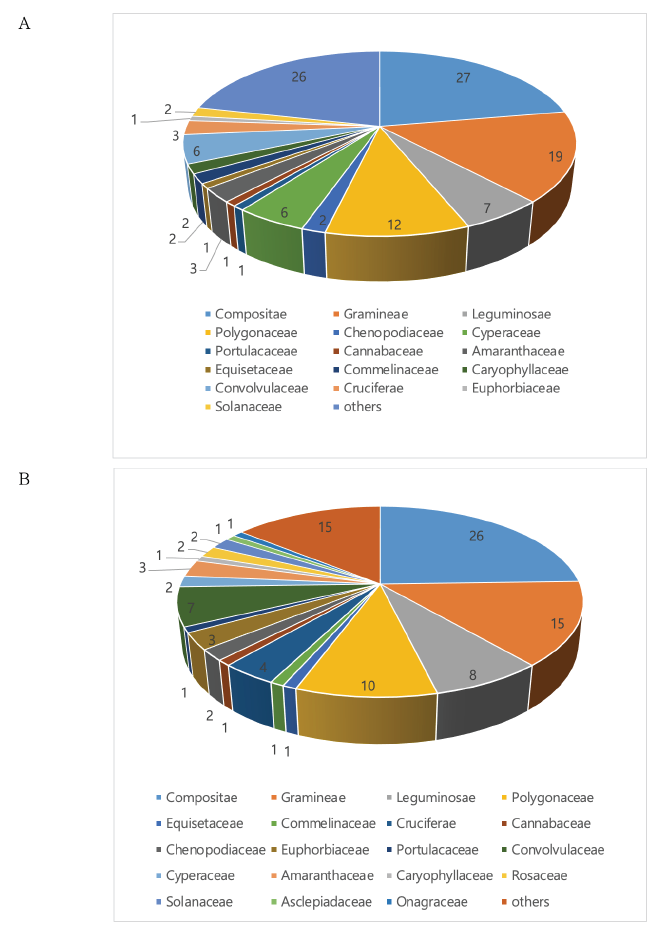Abstract
This study was conducted to compare plant flora living in eco-friendly agriculture and conventional agriculture farmland in Gyeonggi province to provide basic data for the need of eco-friendly agriculture and the value of the coexistence of nature and agriculture. Among field crops, organic and conventional cultivation sites for beans (Yeoncheon), red peppers (Pocheon), glutinous corns (Yangpyeong), green onions (Icheon), and potatoes (Yeoju) were selected. Plant coverage was classified into 7 grades ranging from r to 5 and the analysis of important values was performed. A total of 37 families and 141 species of weeds were investigated, with 32 families and 106 species in conventional cultivated fields and 33 families 121 species in eco-friendly cultivated fields. In eco-friendly cultivated fields, the order of important values was
Figures & Tables

Fig. 1. Number of plant species by family investigated in eco-friendly (A) and conventional (B) cultivation sites in Gyeonggi province.


